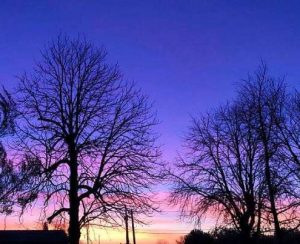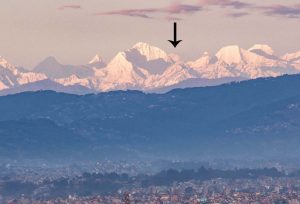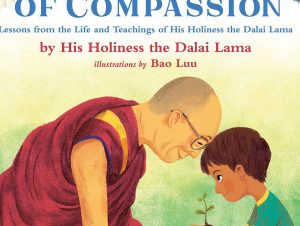
Welcome, dear readers, to another month of taking metta off the meditation cushion and out into the world.
February’s article, Metta’s Silent Treatment, found me observing noble silence in response to game-playing at the regenerative organic farm where I have been living and volunteering since last spring.
The Dharma can be both quite the poet and the comedian: I moved on peacefully on Valentine’s Day, silently leaving a cake and plenty of metta on the table in the staff kitchen to go help a sound-healing retreat center in Wales prepare for their growing and teaching season.
A fellow volunteer I had met while lambing last spring suggested that I reach out to one of their favorite previous placements in case they needed a hand. In the absence of any other obvious inner guidance, I read up on the place and discovered that the founder had been a research scientist and an award-winning market gardener for decades before turning his hand to sound healing and shamanism. After being tangled up in the politics of a new market garden still trying to make its mark, I felt curious about supporting a grower with nothing left to prove.

I followed my friend’s suggestion, and received an enthusiastic invitation within the hour. I took that as a sign to break my noble silence and hopefully close out whatever unsustainable pattern I seemed to keep finding myself in while running in organic growing circles these past two years.
On arrival, I dropped my things off in the shepherd’s hut that would be my residence and joined the founder and his daughter for a delicious, home-grown lunch. We then toured the grounds. It was both heartening to see how much care and attention had gone into the landscaping, yet heartbreaking to see how overwhelmed the founder was feeling after 30 years of developing it from—in the words of a neighbor—a field only crows had shat on until then.

The landscaping included pagan and Celtic-inspired hand-built structures, such as a roundhouse, peace sound chamber, and sweat lodge, as well as sacred geometric areas for contemplation and ceremony—a triple spiral labyrinth, emissary wheel, and standing stones. My time volunteering in an ancient woodland the winter before last meant that I instantly recognized and appreciated the Celtic tree calendar planting encircling a peace grove, a nod to an older time when circles of trees—rather than stones—served as places of worship and peace negotiations. Back then, all weapons were surrendered on entry. In the present, visitors are invited to surrender emotional baggage on entry.
More down to earth, there was a forest garden, raised beds, and two polytunnels for growing the site’s food, as well as a reed bed for purifying its water. What intrigued me most on that first walkabout, however, was an area left completely untouched as a shamanic nod of respect to the “originals” of the land.
On arrival in mid-February, pruning the dozens of fruit trees onsite before budding was top priority. I started off by holding ladders as father and daughter decided what 20 per cent of bare branches needed pruning, balancing the short-term health of the season’s fruit with the longer-term health of the trees’ overall structure. Essentially, they were deciding where best to invest the coming season’s life energy.

It was a funny process to witness from below, as not much happened until a decision was made. Then the result could be both dramatic and comical as cut branches usually don’t fall to the ground gracefully. It was then up to me to drag the pruned wood away, like a beaver, and triage it into piles for processing into firewood, brush for wildlife, and the rest for an eventual bonfire.
In time, I was assigned my own trees to prune. My first was an apple tree only a few years old, which made it much easier to choose which branches to encourage and which to cut without needing a ladder. I eventually graduated to more mature apple and quince trees, both of which were decades old and took me several days of climbing, “ummming” and “ahhhing,” and consulting with both the tree—yes, like a good shamanic hairdresser, I always respectfully asked before making a substantial hack—and the other, more experienced tree surgeons.
The silence and darkness of the late winter nights in the shepherd’s hut mirrored the daytime pruning. I was surprised that my grief of the past few months persisted, despite a change in geography. As I sat with my sadness and confusion about my experiences in the past two years volunteering on organic farms and what I might like to do next, it quickly grew into a life review of where best to invest my life energy going forward.

Pruning the inner 20 per cent for the next growing season included outdated beliefs, dreams, identities, responsibilities, memories, and connections. While I have many loved ones, only two are presently what I can call emotional stakeholders: friends in a position to really see and hear me without a vested interest in what I do next other than flower and fruit for my own sake. And while I was treated more fairly and kindly here than at any previous placement, with the breathing space of being the site’s only volunteer, my heart certainly wasn’t as all in as it had been two years ago.
Over tea times and meal times with the founder and his daughter, I detected a similar weariness in them for different reasons. Thirty years of land stewardship, professional growing, special needs care farming, research, grant applications, and running courses on sound healing and shamanism had taken their toll more literally on the founder’s heart health. Now in his late 70s, it was dawning on him that he no longer had the physical stamina to maintain the site by himself.

A decade ago, he had already sold the market garden and farmhouse with a view to devoting himself to the retreat center activities. However, even that was proving overwhelming these days, and he worried about what would happen to what he regarded as his life’s mission. And, like many of the previous farms at which I’d helped, his daughter had her own dreams and wasn’t keen to take on this mission.
Realistically, all I could do was to support the daily tasks, listen deeply, and offer an outsider’s observations when asked.
While it’s not usually my style to give advice, I often found myself voicing the questions I was noodling privately too: what needed to be dropped to better invest a limited amount of life energy? How might a life mission evolve and change? And, rather than trying to figure it all out ourselves, why not ask the “originals” of the land and the Dharma what they wanted to have happen next?

The occasional baking, kindness, funny film, and resident rescue dog’s antics all helped lighten heavy hearts before we welcomed the first sound healing course group for a long weekend in mid-March.
While I can’t speak for the future of the retreat center, back in the shepherd’s hut, my daily sits and sometimes novel-length texts to my emotional ladder-holders helped with the inner pruning process.
One friend, who is in the middle of a divorce, wisely pointed out that, after investing so much energy in exchanges that often turned out to be anything but reciprocal over the last two years, was it any wonder that I was struggling to decide my own next steps? Perhaps it was time to let myself off the hook and, rather than try to figure out what this land work volunteering chapter had really been about and why I was feeling so depleted, simply cut my losses and accept that I’d found myself in the wrong neighborhood for me? Maybe it was time to reinvest all the care, effort, and attention I’d invested others in myself again? And, wasn’t it high time that we both made ourselves our number-one priority again?

And so I pared down to generating metta just for me for a few weeks.
The second friend, a recently retired energy healer, echoed similar wisdom as she enjoyed some much-needed downtime after a career of helping others. She shared a helpful technique to clear energies, entities, and attachments to pain to practice for a while, alongside generating metta for myself.
And so I battened down the hatches over the spring equinox and Easter to prepare the inner ground for the lengthening days and the new growing season: I filled only myself with metta, weeded out as many energy drains as I could identify, and dragged any of my life’s prunings onto an inner bonfire to give the Dharma room to redirect my life energy.
Dear readers, if it’s feeling too soon to tell in what direction the Dharma wants you to grow next, please join me in allowing metta to pare us down and fill us up again, while the days lengthen and the seasons change to ripen the fruits of our efforts and feed more sustainable new ways forward.

Or, to metta-morphose Post Malone’s song “Circles” about recognizing and ending patterns that lead to pain, as well as a nod to the Celtic spirals currently swirling all around me:
We couldn’t turn around
Until we were upside downRun away, but we’re running in circles
Run away, run away, run awaySeasons change and our love went cold
Feed the flame ‘cause we can’t let goAnd I still hear the echoes (the echoes)
I got a feeling that it’s time to let it go, let it goMetta, I dare you to do something
I’m waiting on you again
Related features from BDG
Gathering Blackberries: End of Season Reflections on Loss and Belonging
On Relationships, Greed, and Generosity
No Inside, No Outside
The Marriage of Form and Emptiness
Small Losses and Great Grief












